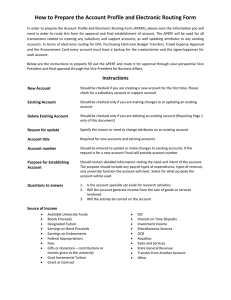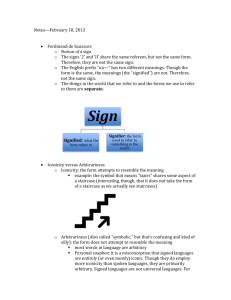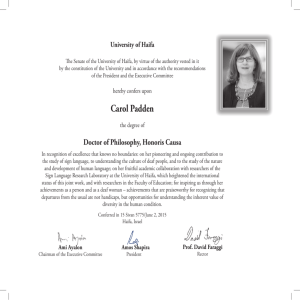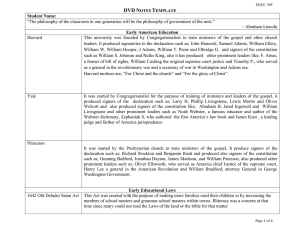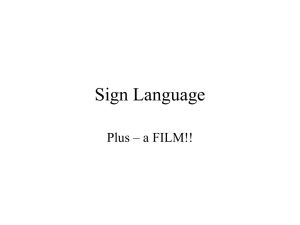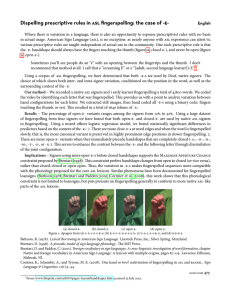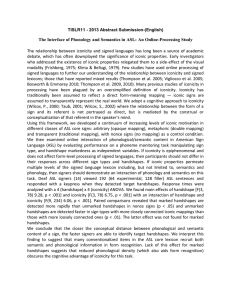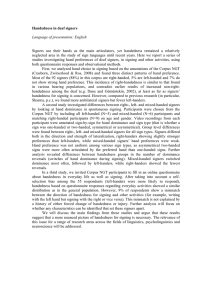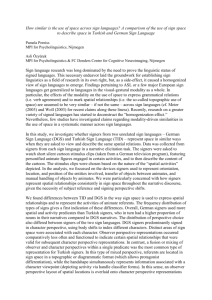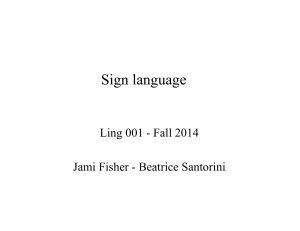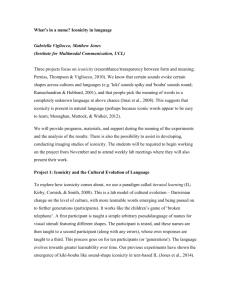Word structure in sign languages
advertisement
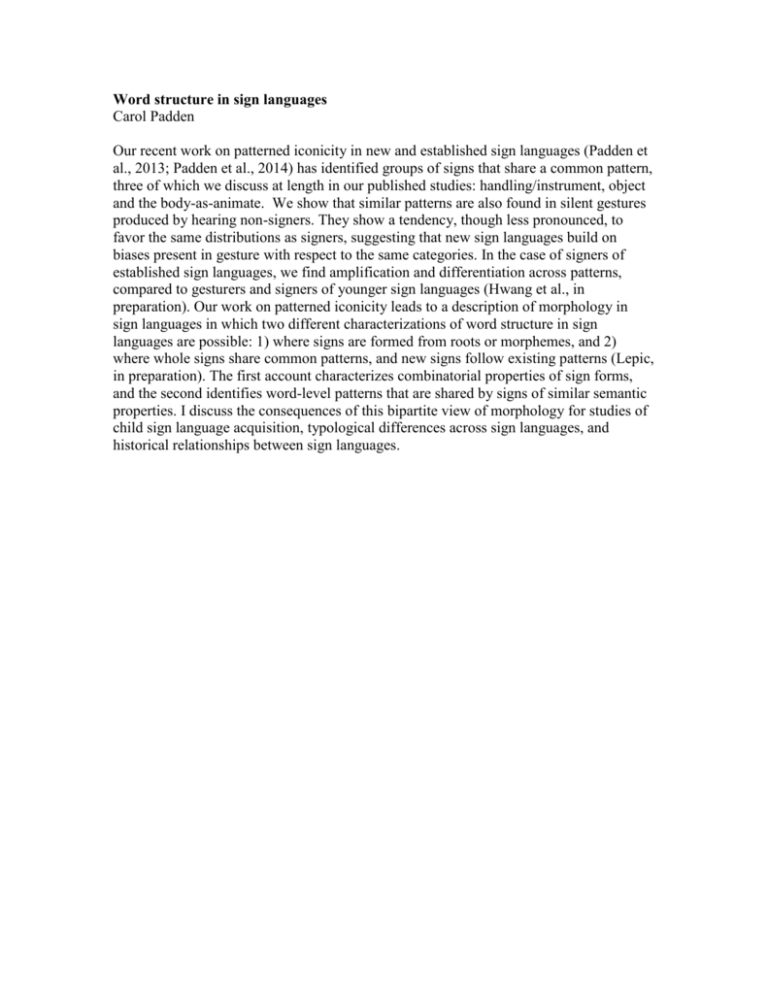
Word structure in sign languages Carol Padden Our recent work on patterned iconicity in new and established sign languages (Padden et al., 2013; Padden et al., 2014) has identified groups of signs that share a common pattern, three of which we discuss at length in our published studies: handling/instrument, object and the body-as-animate. We show that similar patterns are also found in silent gestures produced by hearing non-signers. They show a tendency, though less pronounced, to favor the same distributions as signers, suggesting that new sign languages build on biases present in gesture with respect to the same categories. In the case of signers of established sign languages, we find amplification and differentiation across patterns, compared to gesturers and signers of younger sign languages (Hwang et al., in preparation). Our work on patterned iconicity leads to a description of morphology in sign languages in which two different characterizations of word structure in sign languages are possible: 1) where signs are formed from roots or morphemes, and 2) where whole signs share common patterns, and new signs follow existing patterns (Lepic, in preparation). The first account characterizes combinatorial properties of sign forms, and the second identifies word-level patterns that are shared by signs of similar semantic properties. I discuss the consequences of this bipartite view of morphology for studies of child sign language acquisition, typological differences across sign languages, and historical relationships between sign languages.
